1. Cornbleet J. 1983; Spurious results from automated hematology cell counters. Lab Med. 14:509–14. DOI:
10.1093/labmed/14.8.509.

2. Zandecki M, Genevieve F, Gerard J, Godon A. 2007; Spurious counts and spurious results on haematology analysers: a review. Part I: platelets. Int J Lab Hematol. 29:4–20. DOI:
10.1111/j.1365-2257.2006.00870.x. PMID:
17224004.

3. Zandecki M, Genevieve F, Gerard J, Godon A. 2007; Spurious counts and spurious results on haematology analyzers: a review. Part II: white blood cells, red blood cells, hemoglobin, red cell indices and reticulocytes. Int J Lab Hematol. 29:21–41. DOI:
10.1111/j.1365-2257.2006.00871.x. PMID:
17224005.

4. Godon A, Genevieve F, Marteau-Tessier A, Zandecki M. 2012; Anomalies et erreurs de détermination de l'hémogramme avec les automates d'hématologie cellulaire Partie 3. Hémoglobine, hématies, indices érythrocytaires, réticulocytes [Automated hematology analyzers and spurious counts Part 3. Hemoglobin, red blood cells, cell count and indices, reticulocytes]. Ann Biol Clin (Paris). 70:155–68. DOI:
10.1684/abc.2012.0685. PMID:
22484526.
5. De la Salle B. 2019; Pre- and postanalytical errors in haematology. Int J Lab Hematol. 41(S1):170–6. DOI:
10.1111/ijlh.13007. PMID:
31069968.

6. Nicholls PD. 1983; An improved method for obtaining reliable blood counts with hyperlipaemic samples on an automated particle counter. Med Lab Sci. 40:397–400.
8. Gulati GL. 2021. Blood cells: morphology and clinical relevance. 3rd ed. American Society of Consultant Pharmacists Press;Chicago, IL: p. 13. p. image 2.17.
9. Zeng SG, Zeng TT, Jiang H, Wang LL, Tang SQ, Sun YM, et al. 2013; A simple, fast correction method of triglyceride interference in blood hemoglobin automated measurement. J Clin Lab Anal. 27:341–5. DOI:
10.1002/jcla.21568. PMID:
24038218. PMCID:
PMC6807499.

11. Zhao XC, Ju B, Wei N, Ding J, Men FJ, Zhao HG. 2020; Severe hyperlipemia-induced pseudoerythrocytosis - implication for misdiagnosis and blood transfusion: A case report and literature review. World J Clin Cases. 8:4595–602. DOI:
10.12998/wjcc.v8.i19.4595. PMID:
33083423. PMCID:
PMC7559684.

12. Lippi G, Blanckaert N, Bonini P, Green S, Kitchen S, Palicka V, et al. 2008; Haemolysis: an overview of the leading cause of unsuitable specimens in clinical laboratories. Clin Chem Lab Med. 46:764–72. DOI:
10.1515/CCLM.2008.170. PMID:
18601596.

13. Lippi G, Musa R, Avanzini P, Aloe R, Pipitone S, Sandei F. 2012; Influence of
in vitro hemolysis on hematological testing on Advia 2120. Int J Lab Hematol. 34:179–84. DOI:
10.1111/j.1751-553X.2011.01378.x. PMID:
22051137.
14. de Jonge G, Dos Santos TL, Cruz BR, Simionatto M, Bittencourt JIM, Krum EA, et al. 2018; Interference of
in vitro hemolysis complete blood count. J Clin Lab Anal. 32:e22396. DOI:
10.1002/jcla.22396. PMID:
29396875. PMCID:
PMC6817011.
16. Topic A, Milevoj Kopcinovic L, Bronic A, Pavic M. 2018; Effect of cold agglutinins on red blood cell parameters in a trauma patient: a case report. Biochem Med (Zagreb). 28:031001. DOI:
10.11613/BM.2018.031001. PMID:
30429683. PMCID:
PMC6214689.

17. Rim JH, Chang MH, Oh J, Gee HY, Kim JH, Yoo J. 2018; Effects of cold agglutinin on the accuracy of complete blood count results and optimal sample pretreatment protocols for eliminating such effects. Ann Lab Med. 38:371–4. DOI:
10.3343/alm.2018.38.4.371. PMID:
29611389. PMCID:
PMC5895868.

18. La Gioia A. 2019; Eliminating or minimizing the effects of cold agglutinins on the accuracy of complete blood count results. Ann Lab Med. 39:499–500. DOI:
10.3343/alm.2019.39.5.499. PMID:
31037871. PMCID:
PMC6502948.

19. Hillyer CD, Knopf AN, Berkman EM. 1990; EDTA-dependent leukoagglutination. Am J Clin Pathol. 94:458–61. DOI:
10.1093/ajcp/94.4.458. PMID:
2121021.

20. Yang D, Guo X, Chen Y, Xu G. 2008; Leukocyte aggregation
in vitro as a cause of pseudoleukopenia. Lab Med. 39:89–91. DOI:
10.1309/RHN7D0FRW6W0QKWR.
21. Lesesve JF, Fediuk T, Merseille JM, Braun F. 2007; EDTA-dependent lymphoagglutination in a patient with non-Hodgkin lymphoma. Int J Lab Hematol. 29:221–4. DOI:
10.1111/j.1751-553X.2006.00840.x. PMID:
17474901.

23. Goyal P, Agrawal D, Kailash J, Singh S. Cold-induced pseudoneutropenia in human immunodeficiency virus infection: first case report and review of related articles. Indian J Hematol Blood Transfus. 2014; 30(suppl. 1):148–50. DOI:
10.1007/s12288-013-0300-1. PMID:
25332564. PMCID:
PMC4192267.

24. Sultan S, Irfan SM. 2017; In vitro leukoagglutination: A rare hematological cause of spurious leukopenia. Acta Med Iran. 55:408–10.
25. Chen L, Xu X, Zhang Y, Peng J, Zhou K, Wang J, et al. 2018; Detection of EDTA-induced pseudo-leukopenia using automated hematology analyzer with VCS technology. Clin Chem Lab Med. 56:e204–6. DOI:
10.1515/cclm-2017-1173. PMID:
29455187.

27. Anand M, Gulati HK, Joshi AR. 2012; Pseudoleukopenia due to ethylenediaminetetraacetate- induced leukoagglutination in a case of hypovolemic shock. Indian J Crit Care Med. 16:113–4. DOI:
10.4103/0972-5229.99140. PMID:
22988370. PMCID:
PMC3439775.

28. Schuff-Werner P, Mansour J, Gropp A. 2020; Pseudo-thrombocytopenia (PTCP). A challenge in the daily laboratory routine? J Lab Med. 44:295–304. DOI:
10.1515/labmed-2020-0099.

29. Lardinois B, Favresse J, Chatelain B, Lippi G, Mullier F. 2021; Pseudothrombocytopenia-a review on causes, occurrence and clinical implications. J Clin Med. 10:594. DOI:
10.3390/jcm10040594. PMID:
33557431. PMCID:
PMC7915523.

30. Abal CC, Calviño LR, Manso LR, Domínguez MCF, Lorenzo MJL, Balboa CR, et al. 2020; Pseudothrombocytopenia by ethylenediaminetetraacetic acid can jeopardize patient safety-report. EJIFCC. 31:65–9.
31. Bartels PC, Schoorl M, Lombarts AJ. 1997; Screening for EDTA-dependent deviations in platelet counts and abnormalities in platelet distribution histograms in pseudothrombocytopenia. Scand J Clin Lab Invest. 57:629–36. DOI:
10.3109/00365519709055287. PMID:
9397495.

32. Baccini V, Geneviève F, Jacqmin H, Chatelain B, Girard S, Wuilleme S, et al. 2020; Platelet counting: ugly traps and good advice. Proposals from the French-Speaking Cellular Hematology Group (GFHC). J Clin Med. 9:808. DOI:
10.3390/jcm9030808. PMID:
32188124. PMCID:
PMC7141345.

33. Solanki DL, Blackburn BC. 1983; Spurious leukocytosis and thrombocytopenia. A dual phenomenon caused by clumping of platelets
in vitro. JAMA. 250:2514–5. DOI:
10.1001/jama.1983.03340180068032. PMID:
6632146.
34. Savage RA. 1984; Pseudoleukocytosis due to EDTA-induced platelet clumping. Am J Clin Pathol. 81:317–22. DOI:
10.1093/ajcp/81.3.317. PMID:
6422738.

35. Gulati GL, Asselta A, Chen C. 1997; Using a vortex to disaggregate platelet clumps. Lab Med. 28:665–7. DOI:
10.1093/labmed/28.10.665.

36. Lombarts AJ, de Kieviet W. 1988; Recognition and prevention of pseudothrombocytopenia and concomitant pseudoleukocytosis. Am J Clin Pathol. 89:634–9. DOI:
10.1093/ajcp/89.5.634. PMID:
3128946.

37. Roberts WL, Fontenot JD, Lehman CM. 2000; Overestimation of hemoglobin in a patient with an IgA-kappa monoclonal gammopathy. Arch Pathol Lab Med. 124:616–8. DOI:
10.5858/2000-124-0616-OOHIAP. PMID:
10747323.
38. Shastry IK, Nayak DM, Manohar C, Prabhu R, Thomas J. 2014; Paraprotein-induced factitious results on an automated hematology analyzer. Br Biomed Bull. 2:187–91.
39. Brouet JC, Clauvel JP, Danon F, Klein M, Seligmann M. 1974; Biologic and clinical significance of cryoglobulins. A report of 86 cases. Am J Med. 57:775–88. DOI:
10.1016/0002-9343(74)90852-3. PMID:
4216269.
40. Fohlen-Walter A, Jacob C, Lecompte T, Lesesve JF. 2002; Laboratory identification of cryoglobulinemia from automated blood cell counts, fresh blood samples, and blood films. Am J Clin Pathol. 117:606–14. DOI:
10.1309/QXPP-DC4X-N3Q8-KW62. PMID:
11939736.

41. Patel KJ, Hughes CG, Parapia LA. 1987; Pseudoleucocytosis and pseudothrombocytosis due to cryoglobulinaemia. J Clin Pathol. 40:120–1. DOI:
10.1136/jcp.40.1.120. PMID:
3818970. PMCID:
PMC1140844.

42. Gulliani GL, Hyun BH, Gabaldon H. 1977; Falsely elevated automated leukocyte counts on cryoglobulinemic and/or cryofibrinogenemic blood samples. Lab Med. 8:14–6. DOI:
10.1093/labmed/8.12.14.

44. Keshgegian AA, Van Tran N. 1985; (Lankenau Hospital case conference) Mixed cryoglobulinemia causing pseudoleukocytosis. Clin Chem. 31:769–73. DOI:
10.1093/clinchem/31.5.769. PMID:
3987007.

45. Gulati GL, Piao YF, Song AS, Kim WB, Hyun BH. 1995; Interference by cryoproteins in the blood with automated CBCs. Lab Med. 26:138–42. DOI:
10.1093/labmed/26.2.138.

46. Geara A, El-Imad B, Baz W, Odaimi M, El-Sayegh S. 2009; Pseudoleukocytosis secondary to hepatitis C-associated cryoglobulinemia: a case report. J Med Case Rep. 3:91. DOI:
10.1186/1752-1947-3-91. PMID:
19946507. PMCID:
PMC2783090.

48. Latif S, Veillon DM, Brown D, Kaltenbach J, Curry S, Linscott AJ, et al. 2003; Spurious automated platelet count. Enumeration of yeast forms as platelets by the cell-DYN 4000. Am J Clin Pathol. 120:882–5. DOI:
10.1309/H2K6E59LYFE63GPB. PMID:
14671977.
49. Kim HR, Park BRG, Lee MK. 2008; Effects of bacteria and yeast on WBC counting in three automated hematology counters. Ann Hematol. 87:557–62. DOI:
10.1007/s00277-008-0464-1. PMID:
18301891.

51. Lesesve JF, Khalifa MA, Denoyes R, Braun F. 2009; Peripheral blood candidosis infection leading to spurious platelet and white blood cell counts. Int J Lab Hematol. 31:572–6. DOI:
10.1111/j.1751-553X.2008.01069.x. PMID:
18498388.

52. Crabbe G, Van Poucke M, Cantinieaux B. 2002; Artefactually-normal automated platelet counts due to malaria-infected RBC. Clin Lab Haematol. 24:179–82. DOI:
10.1046/j.1365-2257.2002.00414.x. PMID:
12067284.

53. Morse EE, Kalache G, Germino W, Stockwell R. 1981; Increased electronic mean corpuscular volume induced by marked hyperglycemia. Ann Clin Lab Sci. 11:184–7. PMID:
7259094.
54. de Baca ME, Gulati GL, Kocher W, Schwarting R. 2006; Effects of storage of blood at room temperature on hematologic parameters measured on Sysmex XE-2100. Lab Med. 37:28–36. DOI:
10.1309/1EERK1M02QFJRX6P.

55. Buonocore R, Picanza A, Gennari D, Pipitone S, Lippi G. 2015; Spurious hyperglycaemia impairs automated leucocyte counting. A pilot study with two different haematological analysers. Blood Transfus. 13:656–61. DOI:
10.2450/2015.0104-15. PMID:
26513771. PMCID:
PMC4624544.
56. Watson KR, O'Kell RT, Joyce JT. 1983; Data regarding blood drawing sites in patients receiving intravenous fluids. Am J Clin Pathol. 79:119–21. DOI:
10.1093/ajcp/79.1.119. PMID:
6849287.

57. Gulati GL, Hyun BH. 1996; An unusual WBC scattergram and its possible causes. Lab Med. 27:398–402. DOI:
10.1093/labmed/27.6.398.

58. Whiteway AJ, Bain BJ. 1999; Artefactual elevation of an automated white cell count following femoral vein puncture. Clin Lab Haematol. 21:65–8. DOI:
10.1046/j.1365-2257.1999.00178.x. PMID:
10197267.

59. Maeda K, Pohlad R. 1980; Pseudoleukocytosis due to fibrin strands. Am J Clin Pathol. 74:497.
60. Kumar A, Goswami R, Masih M, Kakkar N. 2018; Spurious leukocyte counts and an abnormal histogram pattern due to fibrin clumps. Indian J Hematol Blood Transfus. 34:785–7. DOI:
10.1007/s12288-018-0998-x. PMID:
30369770. PMCID:
PMC6186246.

61. Akwari AM, Ross DW, Stass SA. 1982; Spuriously elevated platelet counts due to microspherocytosis. Am J Clin Pathol. 77:220–1. DOI:
10.1093/ajcp/77.2.220. PMID:
7064920.

62. Sapanara NL, Tanev SS, Swami V. 2004; Spurious thrombocytosis in a burn patient. Lab Med. 35:98–100. DOI:
10.1309/DCPND5J6FL59UCD3.

63. Tantanate C. 2015; Spuriously high platelet counts by various automated hematology analyzers in a patient with disseminated intravascular coagulation. Clin Chem Lab Med. 53:e257–9. DOI:
10.1515/cclm-2015-0055. PMID:
25830905.

64. Zahid MF, Alsammak MS. 2018; Spurious thrombocytosis in the setting of hemolytic anemia and microcytosis secondary to extensive burn injury. Turk J Haematol. 35:205–6. DOI:
10.4274/tjh.2017.0466. PMID:
29391327. PMCID:
PMC6110454.

65. Velizarova M, Tsvetkova G, Hadjiev E, Yacheva T, Tomov T. 2018; Pseudothrombocytosis in a patient with heterozygous beta-thalassemia. Int J Health Sci Res. 8:297–9.
66. Slota AA, Malik D, Hall D. 2020; Pseudo-thrombocytosis caused by extreme microcytosis in a patient with alpha thalassemia trait. Indian J Hematol Blood Transfus. 36:779–80. DOI:
10.1007/s12288-020-01297-6. PMID:
33100731. PMCID:
PMC7573008.

67. Pan LL, Chen CM, Huang WT, Sun CK. 2014; Enhanced accuracy of optical platelet counts in microcytic anemia. Lab Med. 45:32–6. DOI:
10.1309/LM7QPULDM5IHBO3L. PMID:
24719982.

68. Booth F, Mead SV. 1983; Resistance to lysis of erythrocytes containing haemoglobin C-detected in a differential white cell counting system. J Clin Pathol. 36:816–8. DOI:
10.1136/jcp.36.7.816. PMID:
6863574. PMCID:
PMC498395.

69. Seigneurin D, Passe D. 1983; Interference of hyperleukocytosis on Coulter Counter Model S blood counts: methods for correction. Biomed Pharmacother. 37:401–4.
70. Lipemia and hyperleukocytosis can lead to CBC errors. 2016; MLO Med Lab Obs. 48:64.
71. Hatzipantelis ES, Tsantali H, Athanassiou-Metaxa M, Avramidou K, Zambul D, Gombakis N. 2001; Hereditary giant platelet disorder presented as pseudothrombocytopenia. Eur J Haematol. 67:330–1. DOI:
10.1034/j.1600-0609.2001.00604.x. PMID:
11872083.

72. Wang L, Wang H, Liang H, Ren Z, Gao L. 2019; Giant platelets induce double interference in complete blood count. Ann Clin Lab Sci. 49:554–6.
73. Ballard HS, Sidhu G. 1981; Cytoplasmic fragments causing spurious platelet counts in hairy cell leukemia: ultrastructural characterization. Arch Intern Med. 141:942–4. DOI:
10.1001/archinte.1981.00340070122027. PMID:
7235818.

75. van der Meer W, MacKenzie MA, Dinnissen JWB, de Keijzer MH. 2003; Pseudoplatelets: a retrospective study of their incidence and interference with platelet counting. J Clin Pathol. 56:772–4. DOI:
10.1136/jcp.56.10.772. PMID:
14514782. PMCID:
PMC1770090.

76. Kakkar N, Garg G. 2005; Cytoplasmic fragments of leukaemic cells masquerading as platelets in an automated haematology analyser. J Clin Pathol. 58:224. PMID:
15677550. PMCID:
PMC1770578.
77. Gulati GL, Hyun BH, Woodall M. 1979; Platelet satellitosis: a case report with laboratory characterization and quantitative evaluation. Ann Clin Lab Sci. 9:109–15.
79. Kishore M, Nayak D, Manohar C. 2014; Platelet satellitism: A culprit for spurious thrombocytopenia. Br Biomed Bull. 2:230–4.
80. Tantanate C. 2021; Vortex mixing to alleviate pseudothrombocytopenia in a blood specimen with platelet satellitism and platelet clumps. Clin Chem Lab Med. 59:e189–91. DOI:
10.1515/cclm-2020-1432. PMID:
33554527.

81. Constantino BT, Cogionis B. 2000; Nucleated RBCs-significance in the peripheral blood film. Lab Med. 31:223–9. DOI:
10.1309/D70F-HCC1-XX1T-4ETE.

82. de Keijzer MH, van der Meer W. 2002; Automated counting of nucleated red blood cells in blood samples of newborns. Clin Lab Haematol. 24:343–5. DOI:
10.1046/j.1365-2257.2002.00477.x. PMID:
12452814.

83. Pipitone S, Buonocore R, Gennari D, Lippi G. 2015; Comparison of nucleated red blood cell count with four commercial hematological analyzers. Clin Chem Lab Med. 53:e315–8. DOI:
10.1515/cclm-2014-1211. PMID:
25720099.





 PDF
PDF Citation
Citation Print
Print


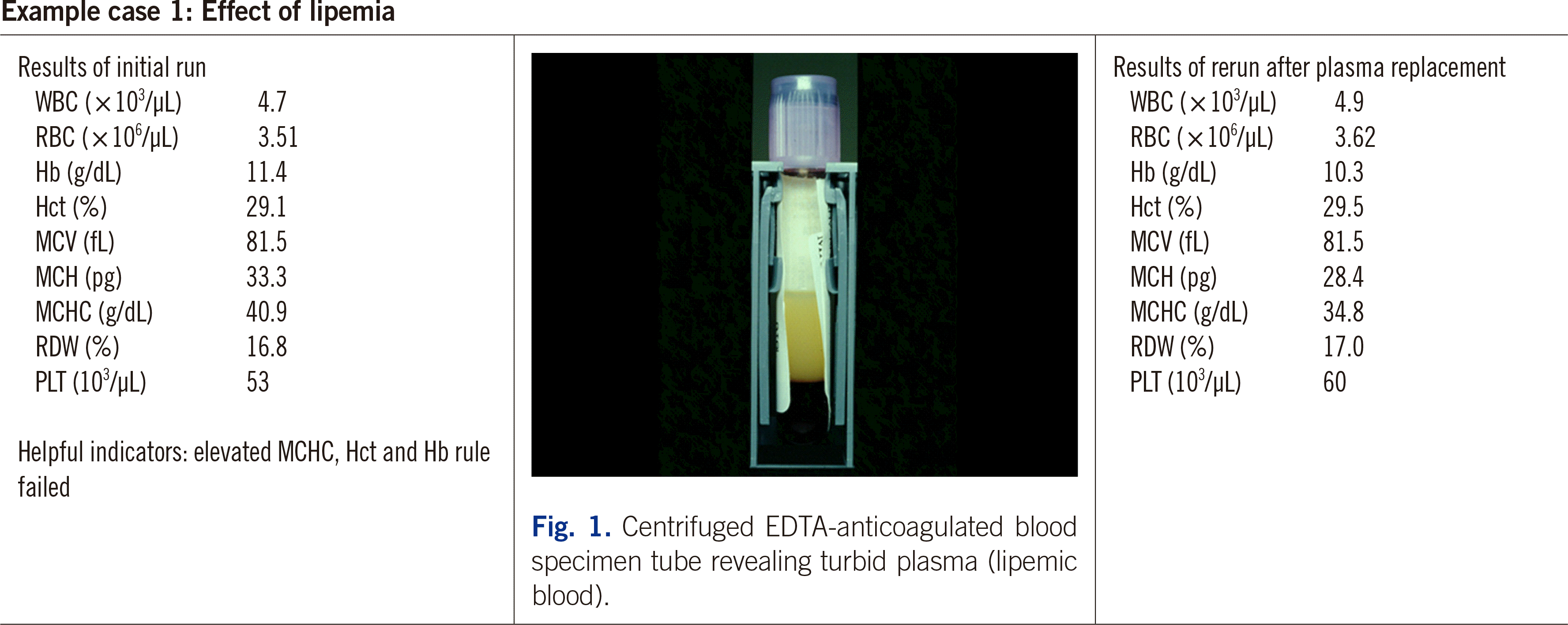
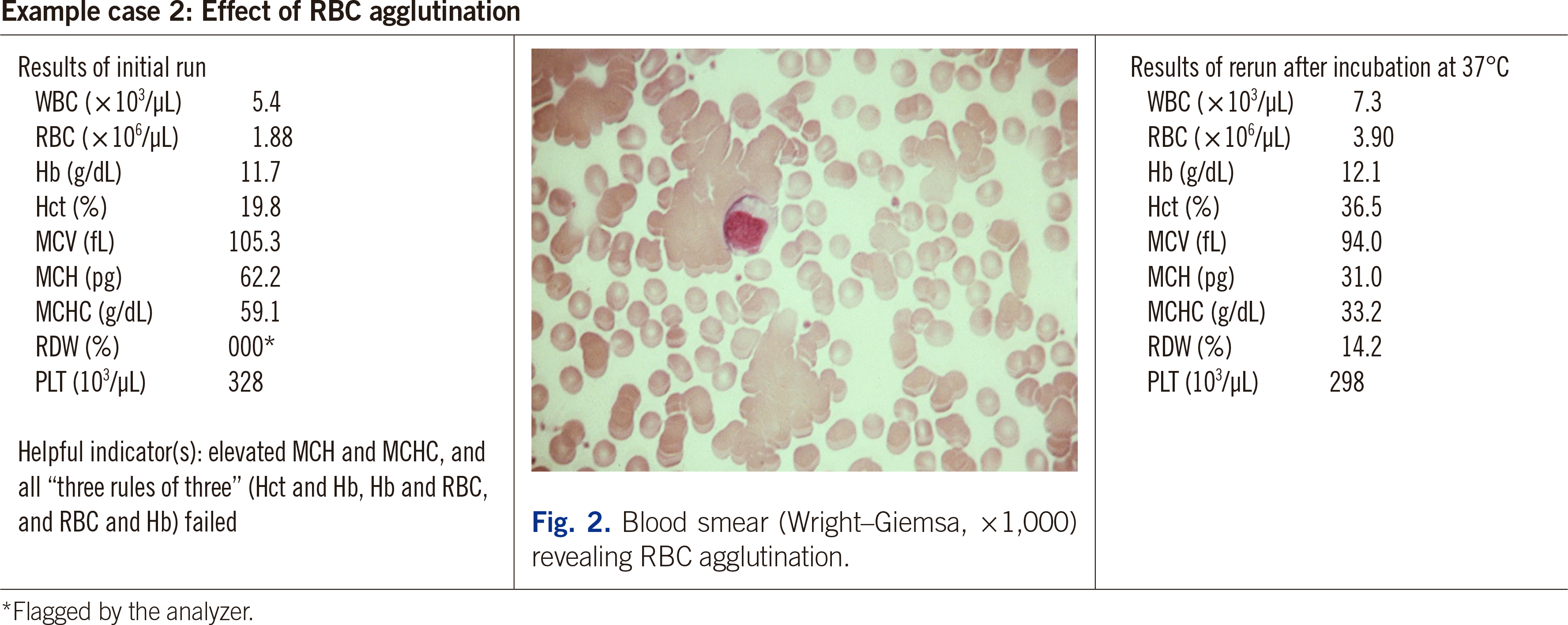
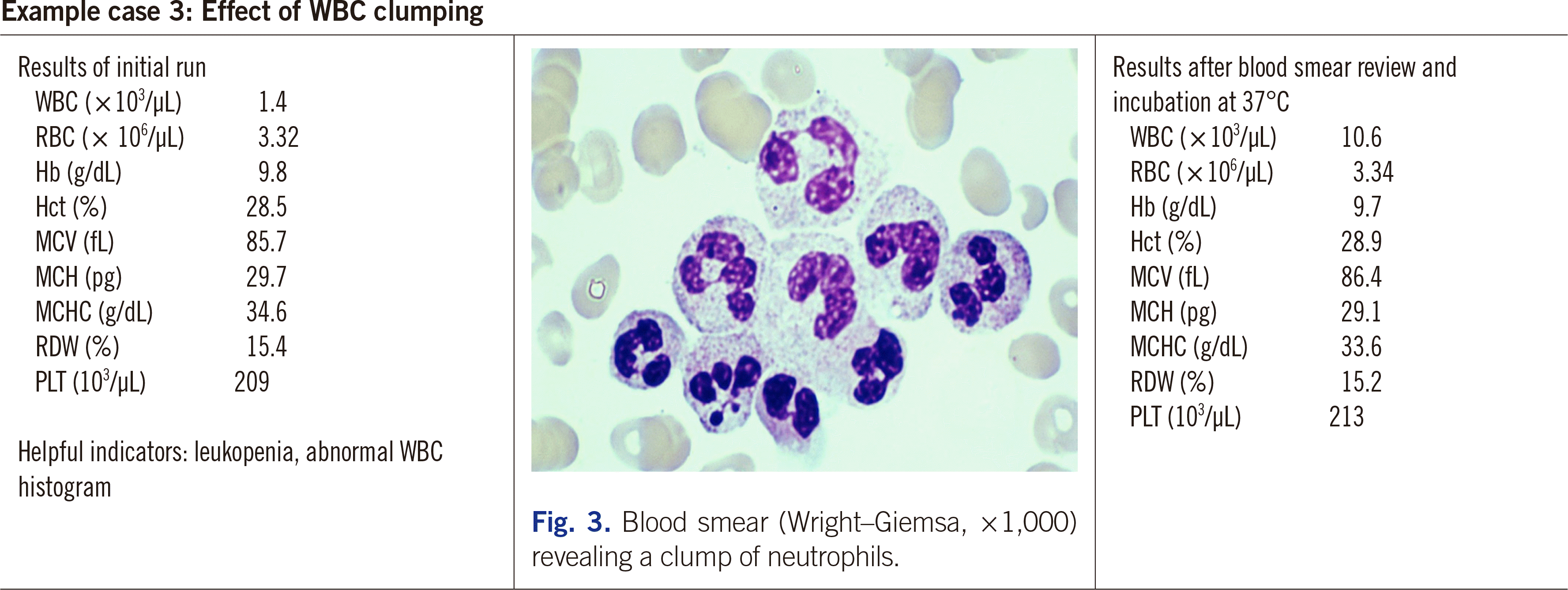
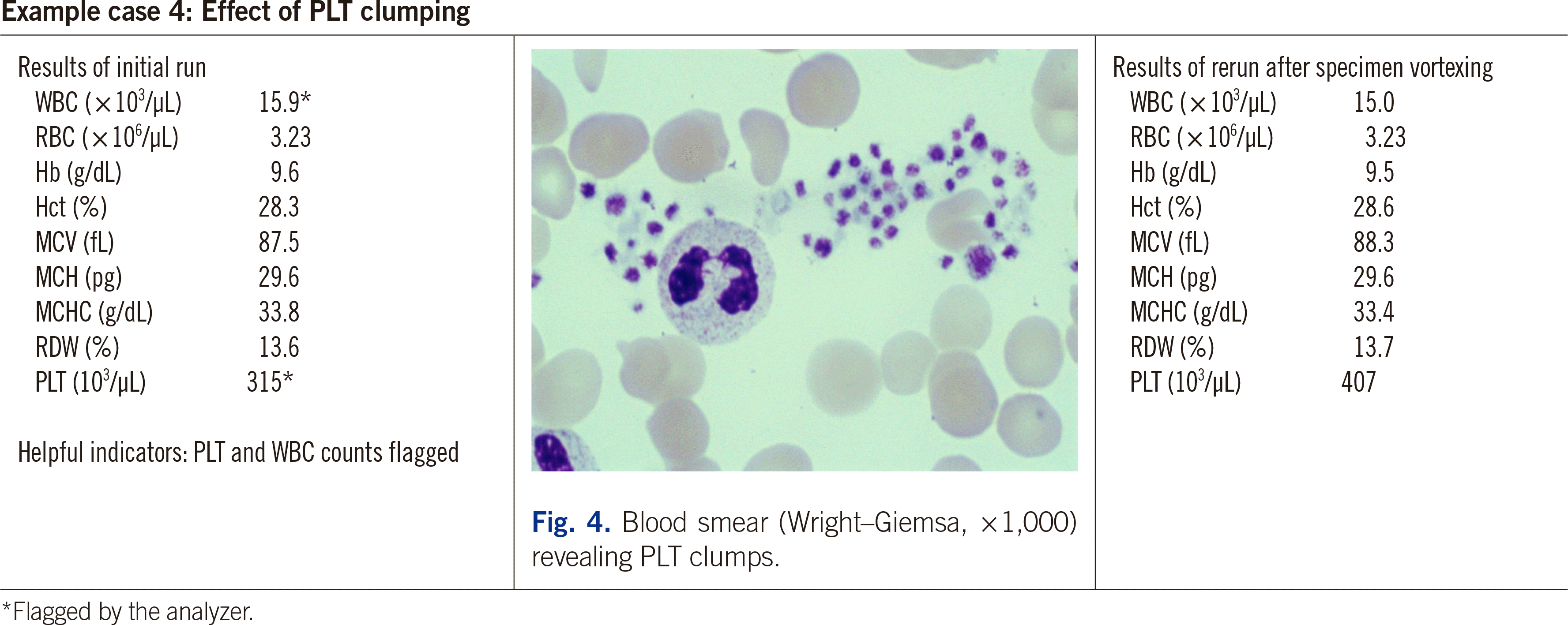
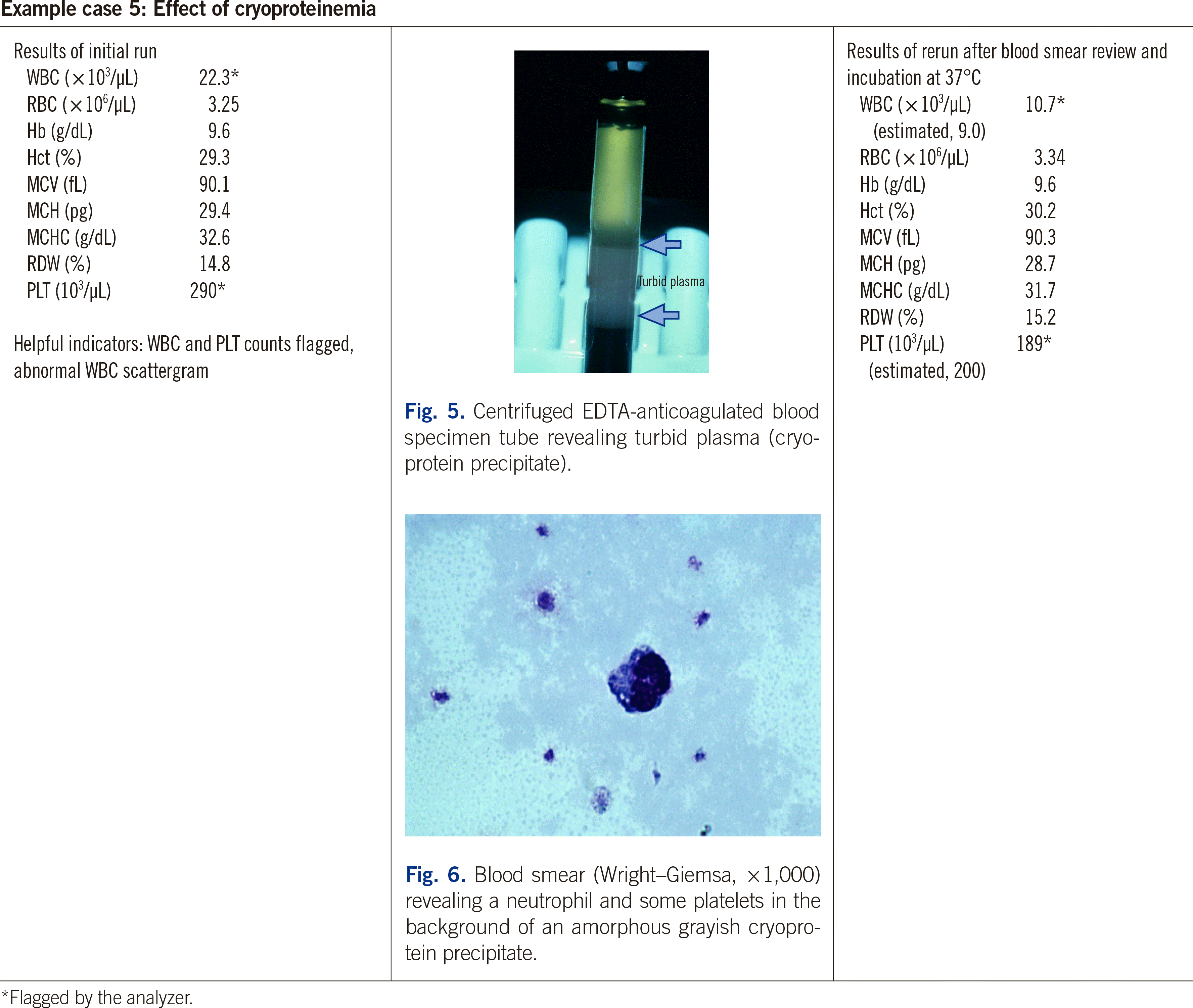
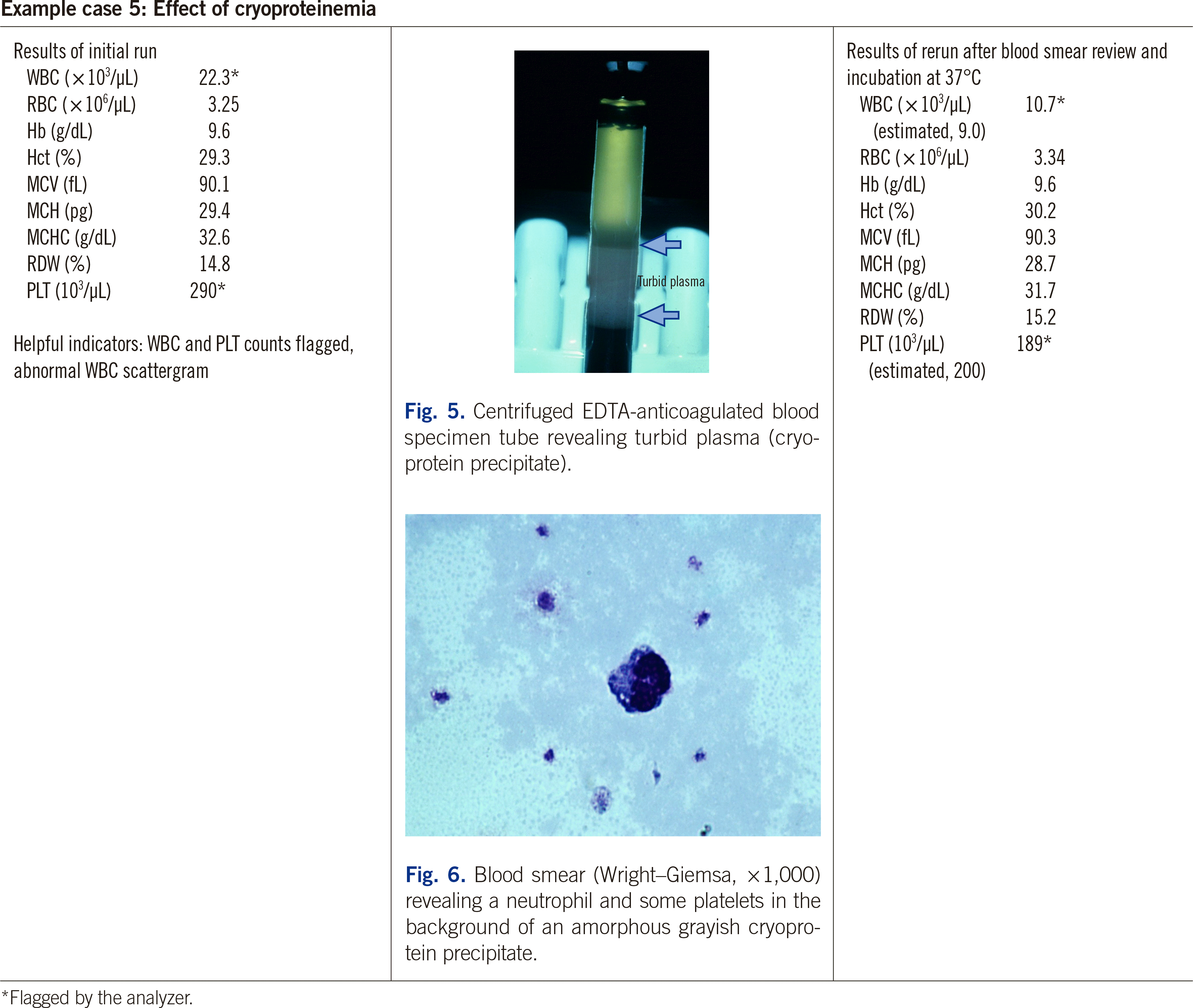
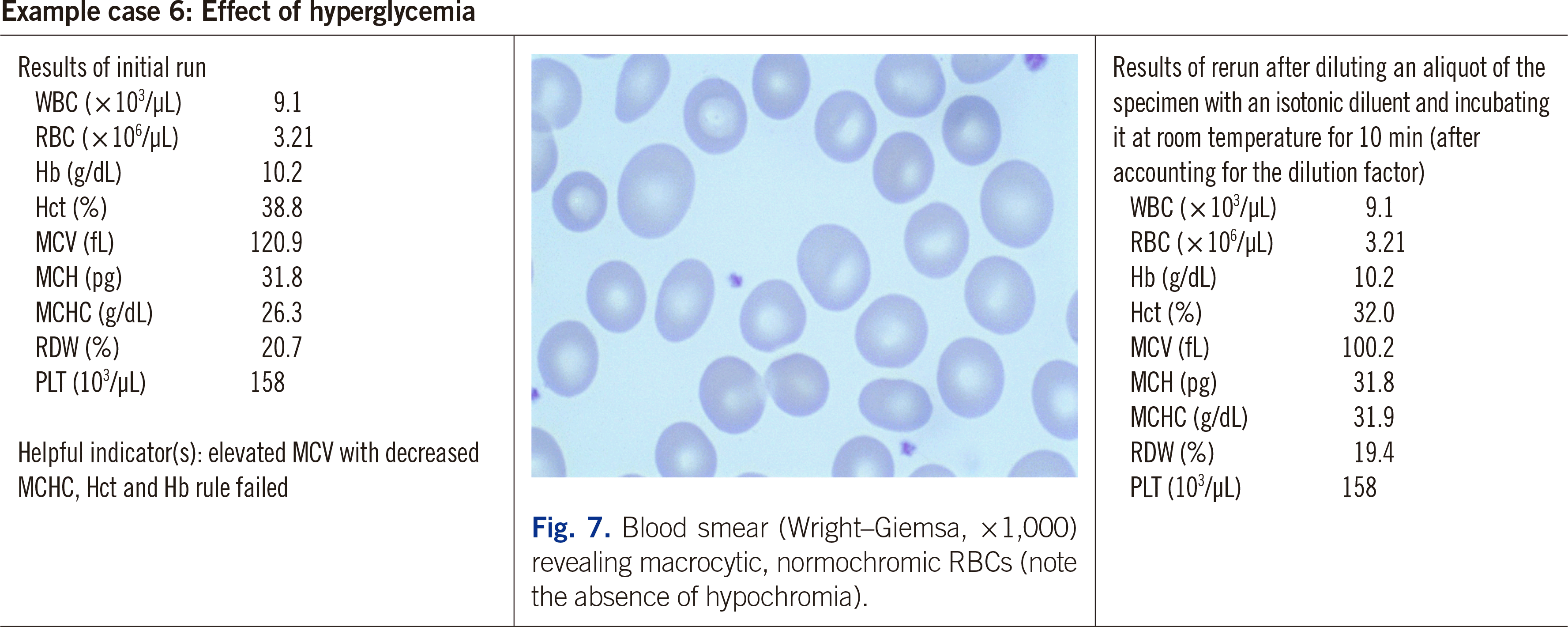
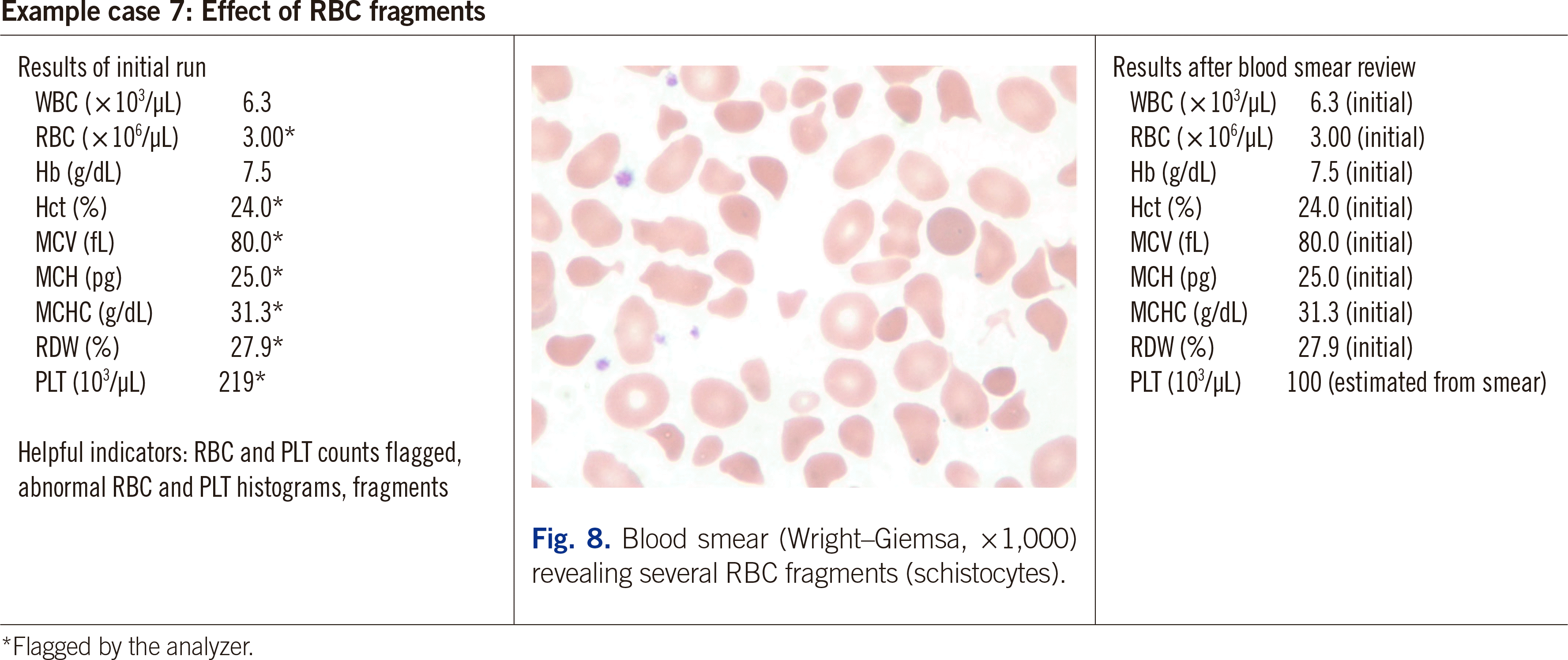
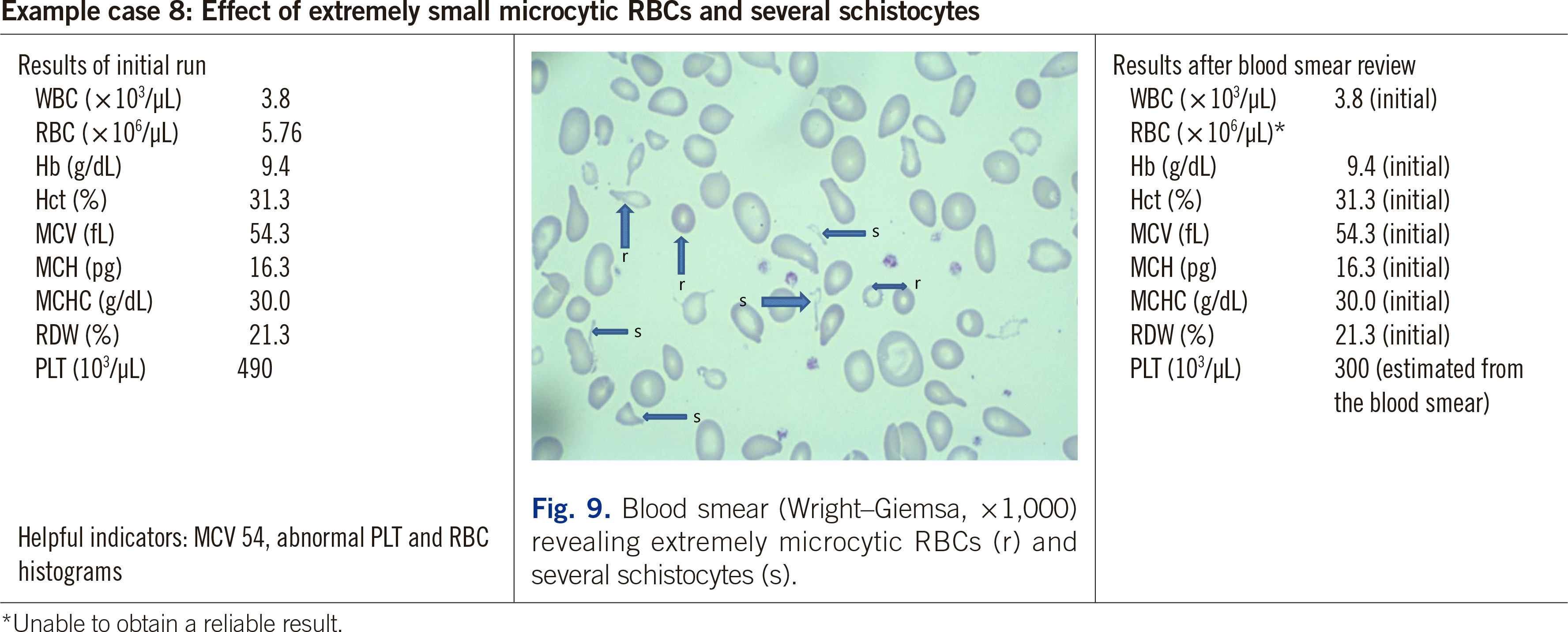
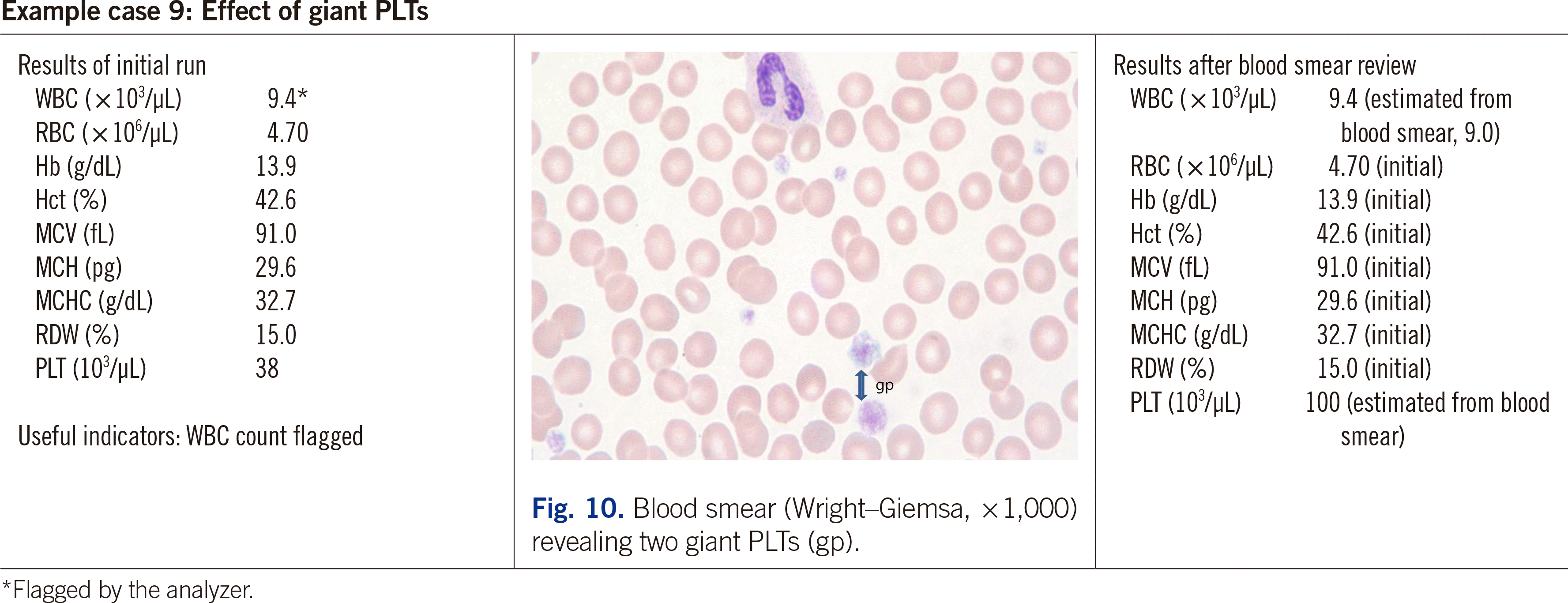
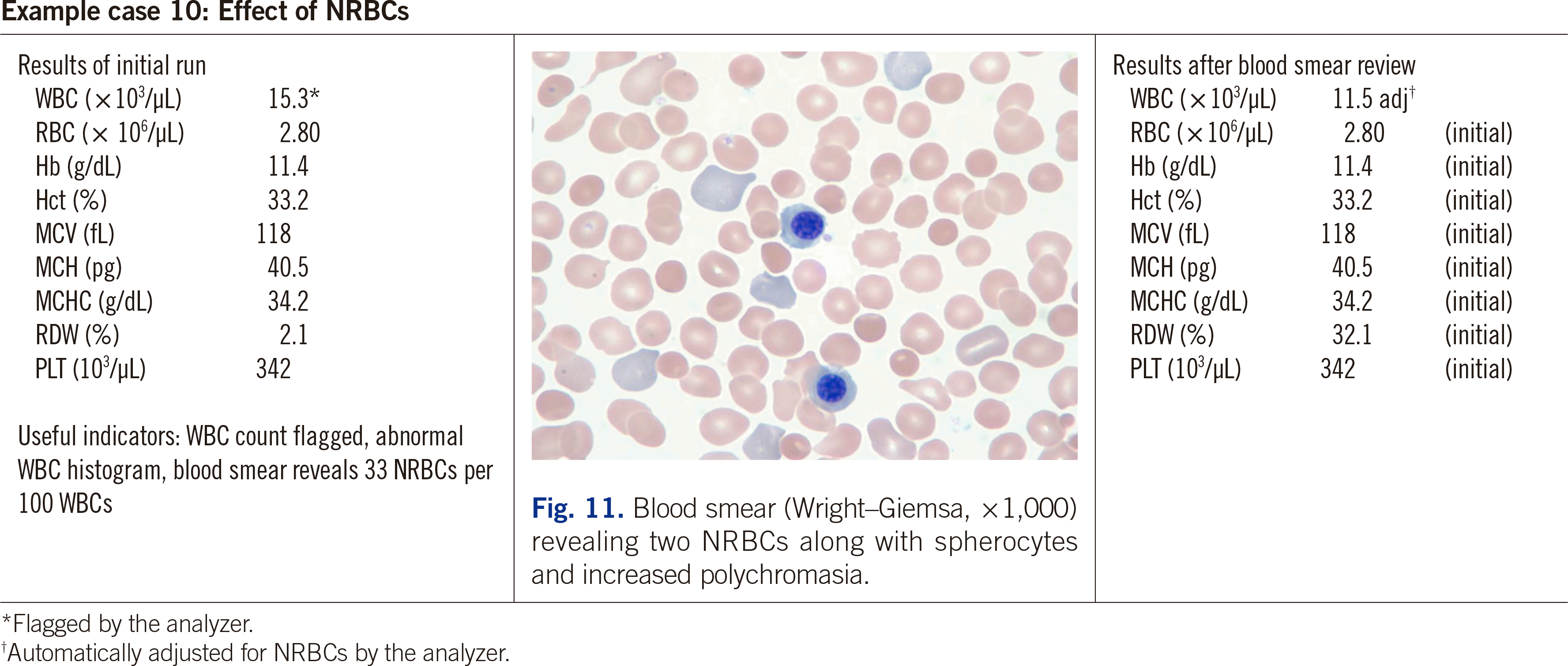
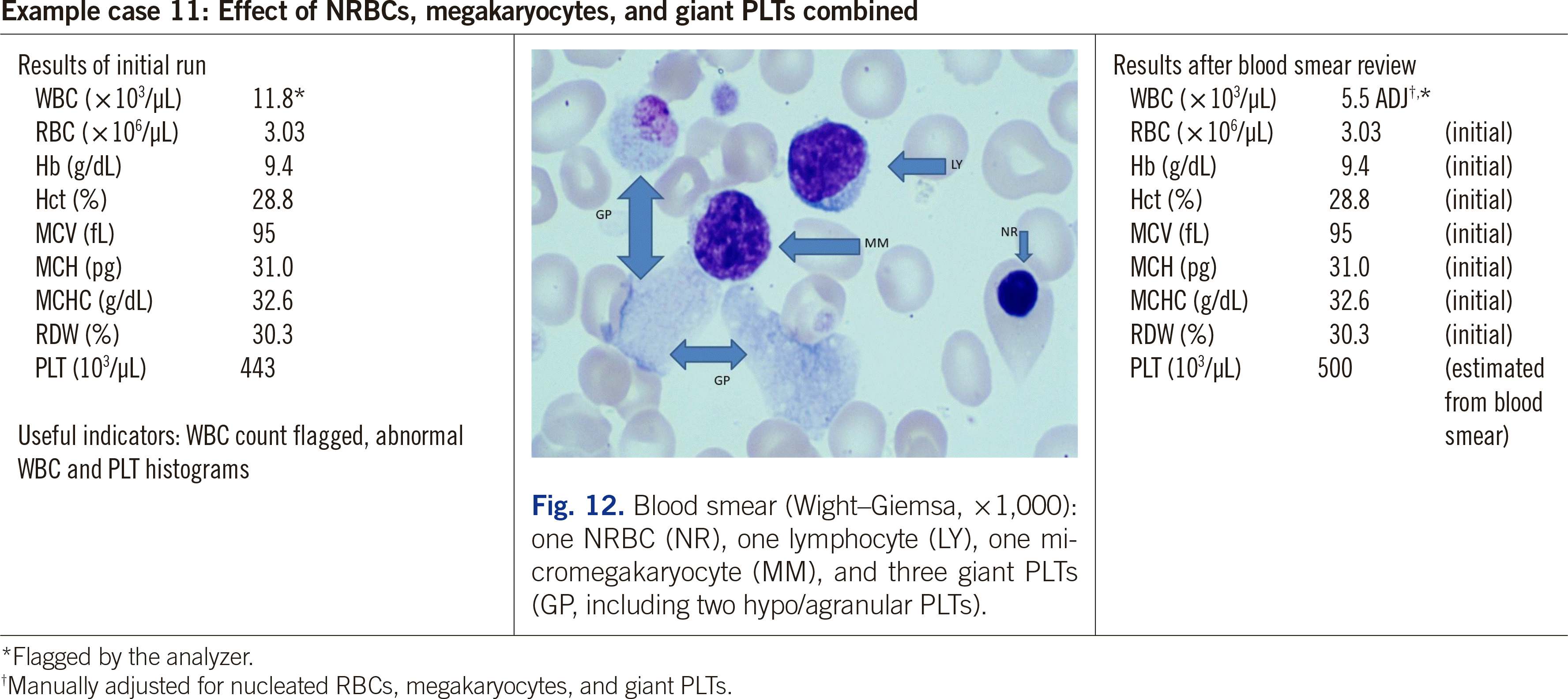
 XML Download
XML Download